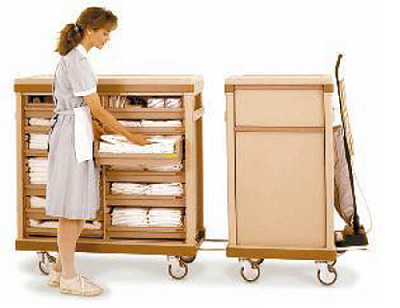As the travel industry continues to re-invent itself with new trends and technology, it’s important for hoteliers to stay in the know about the industry and keep up-to-date with the latest news. However running an entire hotel can leave very little time to stay informed – so, to help you out here are 4 hospitality news outlets we recommend for every hotelier:
1. Hospitalitynet.org: This is a great source that every hotelier should be reading. The site is jammed packed full of information varying from hospitality industry news to marketing and customer service tips specifically designed for hotels. If you’re looking to further your career in hospitality, you will find lists of schools, the latest job opportunities, and resources such as useful books to read. Signing up to their daily newsletter not only means access to plenty of informative articles straight to you inbox but you will also receive industry news regarding new hospitality industry appointments, product news, and useful blogs from other websites.
2. Hotel-Online.com: Launching back in 1995, Hotel-Online is said to be one of the first online news sources for the hotel industry and has the label of the No. 1 news source in the industry. This premier news site provides industry leaders with the latest and most relevant global news, trends, products and services in the hospitality industry – their daily e-newsletter provides readers with the day’s relevant and topical news stories, reports and columns each business day for and about the hospitality industry.
3. HospitalityUpgrade.com : A sister to Hotel-Online.com, HospitalityUpgrade.com is another great source for hoteliers looking for information on the latest technology software and hardware solutions on the market. The site not only educates hospitality professionals on new industry trends and the latest tools and products available but their content also provides in-depth analyses by leading hospitality consultants, insider news and gossip, and features interviews with top industry executives, and profiles from many of the industries’ solution providers.
4. Hotelmarketing.com : What’s great about the site is that while they generally don’t publish their own articles, they curate and aggregate top trending articles and stories from a number of sources around the web from online travel, marketing and hotel marketing for you. They provide a daily newsletter that you can sign up to where you’ll received the latest top trending articles straight to your inbox.
1. Hospitalitynet.org: This is a great source that every hotelier should be reading. The site is jammed packed full of information varying from hospitality industry news to marketing and customer service tips specifically designed for hotels. If you’re looking to further your career in hospitality, you will find lists of schools, the latest job opportunities, and resources such as useful books to read. Signing up to their daily newsletter not only means access to plenty of informative articles straight to you inbox but you will also receive industry news regarding new hospitality industry appointments, product news, and useful blogs from other websites.
2. Hotel-Online.com: Launching back in 1995, Hotel-Online is said to be one of the first online news sources for the hotel industry and has the label of the No. 1 news source in the industry. This premier news site provides industry leaders with the latest and most relevant global news, trends, products and services in the hospitality industry – their daily e-newsletter provides readers with the day’s relevant and topical news stories, reports and columns each business day for and about the hospitality industry.
3. HospitalityUpgrade.com : A sister to Hotel-Online.com, HospitalityUpgrade.com is another great source for hoteliers looking for information on the latest technology software and hardware solutions on the market. The site not only educates hospitality professionals on new industry trends and the latest tools and products available but their content also provides in-depth analyses by leading hospitality consultants, insider news and gossip, and features interviews with top industry executives, and profiles from many of the industries’ solution providers.
4. Hotelmarketing.com : What’s great about the site is that while they generally don’t publish their own articles, they curate and aggregate top trending articles and stories from a number of sources around the web from online travel, marketing and hotel marketing for you. They provide a daily newsletter that you can sign up to where you’ll received the latest top trending articles straight to your inbox.




